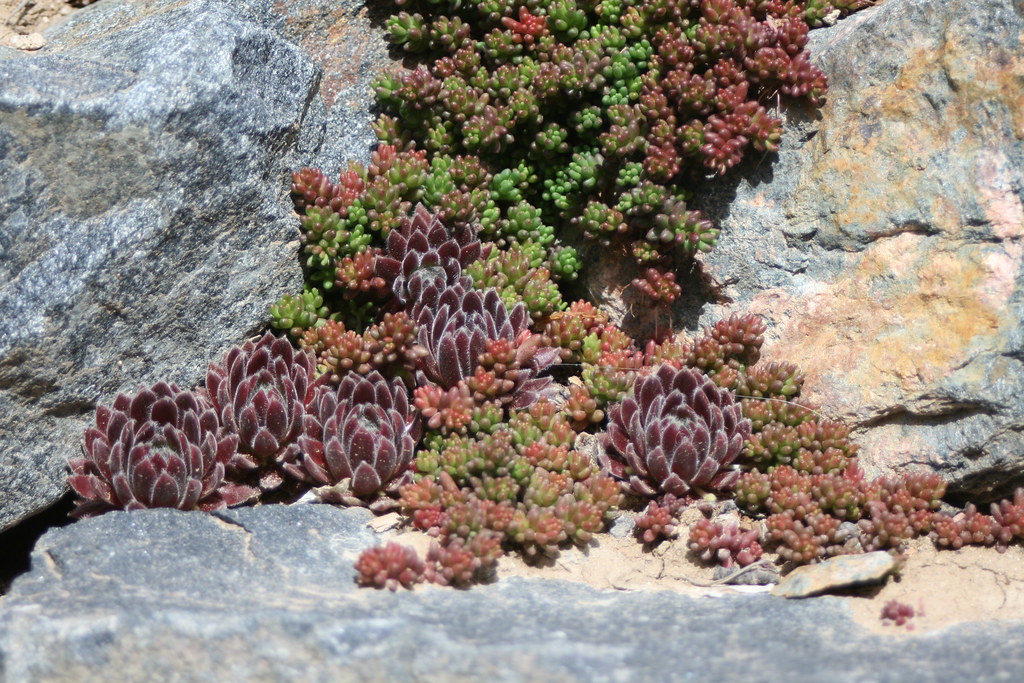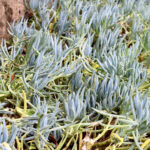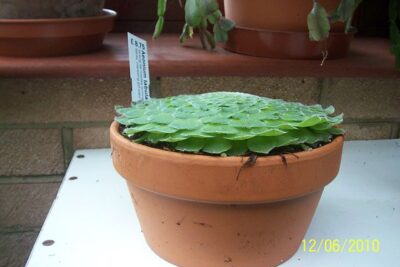
How to Propagate a Rock Succulent by Splitting: Step-by-Step Guide

Rock succulents are a unique and fascinating type of plant that have gained popularity among gardening enthusiasts. These hardy plants have adapted to survive in harsh conditions, such as rocky terrains and arid climates. One interesting method of propagating rock succulents is by splitting, which involves dividing the plant into multiple sections to create new individual plants. This technique allows for the expansion of your rock succulent collection and is a great way to share these beautiful plants with others.
We will provide a step-by-step guide on how to propagate a rock succulent by splitting. We will cover the materials needed, the preparation process, and the actual splitting technique. Additionally, we will discuss the aftercare required for the newly split plants to ensure their successful growth. Whether you are a seasoned succulent enthusiast or a beginner looking to try your hand at propagation, this guide will provide you with all the information you need to successfully propagate rock succulents through splitting.
- Gently remove the rock succulent from its pot
- Step 1: Gently remove the rock succulent from its pot
- Step 2: Inspect the root system and choose a suitable splitting point
- Step 3: Use a sterile, sharp knife or garden shears to split the succulent
- Step 4: Allow the split sections to dry and callus
- Step 5: Plant the split sections in well-draining soil
- Step 6: Provide proper care and maintenance
- Inspect the plant for any signs of damage or disease
- Gather the necessary tools and materials
- Use a clean, sharp knife to carefully split the plant into two or more sections
- Ensure that each section has healthy roots and leaves
- Step 1: Select a mature rock succulent
- Step 2: Prepare your tools
- Step 3: Remove the succulent from its pot
- Step 4: Inspect the roots and leaves
- Step 5: Identify natural separation points
- Step 6: Carefully split the succulent
- Step 7: Trim any damaged roots or leaves
- Step 8: Allow the sections to dry
- Step 9: Plant the new sections
- Step 10: Provide proper care
- Allow the cut sections to dry and callus for a few days
- Prepare a well-draining soil mix for the new plants
- Plant each section in its own pot, making sure to bury the roots and leave the leaves exposed
- Water the newly planted succulents lightly and place them in a bright, indirect light location
- Avoid overwatering and keep an eye out for any signs of root rot or other issues
- Gradually increase the watering frequency as the plants establish and grow
- Step 1: Choose a healthy rock succulent
- Step 2: Prepare the necessary tools
- Step 3: Remove the rock succulent from its container
- Step 4: Inspect the rock succulent for natural separations
- Step 5: Separate the offsets
- Step 6: Allow the offsets to callus
- Step 7: Prepare the planting containers
- Step 8: Plant the offsets
- Step 9: Water the newly planted offsets
- Step 10: Gradually increase watering frequency
- Monitor the new plants for signs of growth and adjust care accordingly
- Frequently Asked Questions
Gently remove the rock succulent from its pot
When it comes to propagating a rock succulent, one of the most effective methods is through splitting. This technique not only allows you to create new plants but also helps to maintain the health and vitality of your existing succulent. Here is a step-by-step guide on how to propagate a rock succulent by splitting:
Step 1: Gently remove the rock succulent from its pot
The first step in the splitting process is to carefully remove the rock succulent from its current pot. This can be done by gently loosening the soil around the base of the plant and carefully lifting it out. It is important to handle the succulent with care to avoid damaging the root system.
Step 2: Inspect the root system and choose a suitable splitting point
Once the rock succulent is out of its pot, take some time to inspect the root system. Look for areas where the plant naturally separates or has multiple growth points. These are potential splitting points that can be used to create new plants.
Step 3: Use a sterile, sharp knife or garden shears to split the succulent
With a sterile, sharp knife or garden shears, carefully make a clean cut at the chosen splitting point. Ensure that the cutting tool is sharp to minimize damage to the plant. Make a straight cut to create two separate sections, each with its own set of roots and leaves.
Step 4: Allow the split sections to dry and callus
After splitting the rock succulent, it is crucial to allow the cut sections to dry and callus before planting them. This step helps to prevent rot and infection in the newly propagated plants. Place the split sections in a shaded area and let them dry for about a week.
 Can I Easily Propagate Succulents by Leaf Propagation?
Can I Easily Propagate Succulents by Leaf Propagation?Step 5: Plant the split sections in well-draining soil
Once the split sections have callused, it is time to plant them in well-draining soil. Choose a suitable pot or container with adequate drainage holes to ensure water does not accumulate around the roots. Fill the pot with a succulent or cactus-specific potting mix, and gently place the split sections into the soil.
Step 6: Provide proper care and maintenance
After planting the split sections, it is important to provide them with proper care and maintenance. Place the newly propagated rock succulents in a bright, indirect light location and water them sparingly. Overwatering can lead to root rot, so it is crucial to allow the soil to dry out between waterings.
By following these steps, you can successfully propagate a rock succulent by splitting. This method is not only rewarding but also helps to expand your succulent collection. Remember to be patient and give your newly propagated plants the care they need to thrive.
Inspect the plant for any signs of damage or disease
Inspecting the plant for any signs of damage or disease is an important first step before propagating a rock succulent by splitting. This will help ensure that you're working with a healthy and viable plant.
Look closely at the leaves, stems, and roots of the succulent. Check for any discoloration, spots, or unusual growth patterns. It's also important to examine the overall health of the plant – if it appears weak or has any visible signs of stress, it may not be the best candidate for propagation.
If you notice any signs of damage or disease, it's best to address these issues before proceeding with splitting. Treating any existing problems will give the plant a better chance of surviving the propagation process and thriving in the future.
 Water Propagation of Succulents: A Comprehensive Guide
Water Propagation of Succulents: A Comprehensive GuideGather the necessary tools and materials
Before splitting your rock succulent, it's important to gather all the necessary tools and materials. This will ensure that you have everything you need on hand and can complete the process smoothly.
Here are the essential tools and materials you'll need:
- Sharp, sterilized knife: A clean and sharp knife will make the splitting process easier and help prevent any potential damage to the plant.
- Container or pots: Prepare small containers or pots for the newly split succulents. Make sure they have drainage holes to prevent waterlogging.
- Well-draining soil mix: Succulents thrive in well-draining soil, so it's important to have a suitable soil mix ready for the new plants.
- Rooting hormone (optional): Using a rooting hormone can increase the chances of successful root development in the newly split succulents.
- Water spray bottle: A spray bottle filled with water will come in handy for misting the newly split plants, helping them settle into their new environment.
Having these tools and materials prepared in advance will make the propagation process more efficient and ensure the best possible outcome for your rock succulent.
Use a clean, sharp knife to carefully split the plant into two or more sections
Propagating rock succulents by splitting is a great way to create new plants and expand your succulent collection. With a clean, sharp knife and a little patience, you can easily divide a mature rock succulent into two or more sections, each capable of growing into a separate plant.
Follow these step-by-step instructions to successfully propagate your rock succulent by splitting:
Step 1: Gather the necessary materials
- A mature rock succulent
- A clean, sharp knife or garden shears
- Well-draining potting soil
- Small pots or containers
- Watering can or spray bottle
Step 2: Prepare the plant for splitting
Before you start splitting your rock succulent, it's important to prepare the plant properly:
 Dormancy in Succulents: A Guide to Varieties and Timing
Dormancy in Succulents: A Guide to Varieties and Timing- Water the rock succulent a few days before propagating. This will ensure the plant is hydrated and less likely to suffer from shock during the splitting process.
- Carefully remove the rock succulent from its current pot or container. Gently tap the sides of the pot to loosen the soil, then carefully slide the plant out.
- Inspect the roots and remove any dead or damaged ones. Trim excessively long roots to encourage new growth.
- Allow the plant to dry for a day or two until the cut ends callus over. This helps prevent rotting and promotes successful rooting.
Step 3: Split the rock succulent
Now it's time to divide your rock succulent into multiple sections:
- Using a clean, sharp knife or garden shears, carefully cut through the center of the rock succulent. Aim to have each section contain a few stems and roots.
- Continue dividing the plant into as many sections as desired. Make sure each section is a viable size, with enough stems and roots to support its growth.
Step 4: Replant the sections
Once you have split the rock succulent, it's time to replant each section:
- Fill small pots or containers with well-draining potting soil.
- Make a small hole in the soil for each section.
- Place each section in its own hole, making sure the roots are in contact with the soil.
- Gently press the soil around the base of each section to stabilize it.
Step 5: Care for the newly split rock succulents
After replanting the sections, it's important to provide proper care to ensure their successful growth:
- Place the newly split rock succulents in a bright location with indirect sunlight.
- Water the plants sparingly, allowing the soil to dry out completely between waterings. Overwatering can lead to root rot.
- Monitor the plants for any signs of stress or disease and take appropriate action if necessary.
- After a few weeks, you should start to see new growth indicating successful rooting.
By following these steps, you can easily propagate your rock succulent by splitting and enjoy the satisfaction of growing new plants from an existing one.
Ensure that each section has healthy roots and leaves
In order to successfully propagate a rock succulent by splitting, it is important to ensure that each section you divide has healthy roots and leaves. This will give the new plant the best chance of thriving.
Step 1: Select a mature rock succulent
Choose a mature rock succulent that has multiple rosettes and strong roots. This will provide you with the best material to split and propagate.
Step 2: Prepare your tools
Gather the necessary tools for splitting the succulent, including a clean and sharp knife or garden shears. It is important to use clean tools to minimize the risk of introducing pathogens to the plant.
 Can Succulent Cuttings Be Planted Directly in Soil?
Can Succulent Cuttings Be Planted Directly in Soil?Step 3: Remove the succulent from its pot
Gently remove the rock succulent from its pot, taking care not to damage the roots or break any leaves. You can tap the sides of the pot or use a small tool to loosen the soil around the plant if necessary.
Step 4: Inspect the roots and leaves
Examine the roots and leaves of the succulent. Look for signs of rot, disease, or pests. If you notice any issues, it is best to address them before proceeding with the splitting process.
Step 5: Identify natural separation points
Take a close look at the rock succulent and identify any natural separation points where you can divide the plant. These are typically areas where the rosettes or stems meet.
Step 6: Carefully split the succulent
Using a clean and sharp knife or garden shears, carefully split the rock succulent at the identified separation points. Make sure to cut through the roots as well. Take your time and make clean cuts to minimize damage to the plant.
Step 7: Trim any damaged roots or leaves
After splitting the succulent, inspect the roots and leaves again. Trim any damaged or rotting parts using clean tools. This will promote healthy growth in the new sections.
Step 8: Allow the sections to dry
Place the divided sections of the rock succulent in a well-ventilated area and allow them to dry for a few days. This will help prevent moisture-related issues and allow the cut ends to callus.
Step 9: Plant the new sections
Once the divided sections have dried and callused, plant them in well-draining soil. Choose appropriately sized pots and ensure the plants are positioned securely. Water lightly after planting, and then gradually increase watering as the new plants establish themselves.
 Propagation of Succulents: Cutting Techniques and Methods
Propagation of Succulents: Cutting Techniques and MethodsStep 10: Provide proper care
After planting, make sure to provide the new rock succulent sections with the appropriate care. This includes placing them in a location with adequate sunlight, watering them sparingly, and monitoring for any signs of stress or disease.
By following these step-by-step instructions, you can successfully propagate a rock succulent by splitting. Enjoy watching your new plants grow and thrive!
Allow the cut sections to dry and callus for a few days
After successfully splitting your rock succulent, it's crucial to give the cut sections some time to dry and form calluses. This process is essential for the successful propagation of your succulent.
Place the cut sections in a well-ventilated area away from direct sunlight. It's important to avoid exposing them to excessive moisture during this time as it can hinder the callusing process.
Note: Depending on the succulent species, the time required for callusing may vary. Generally, it takes around 3 to 5 days for the cut sections to dry and form calluses.
Prepare a well-draining soil mix for the new plants
To successfully propagate a rock succulent by splitting, it is crucial to prepare a well-draining soil mix for the new plants. This will provide them with the necessary nutrients and prevent waterlogging, which can lead to root rot.
Materials Needed:
- Coarse sand
- Perlite
- Peat moss
- Potting soil
Step 1: Gather the Materials
Before you begin mixing the soil, gather all the necessary materials. You can find these items at your local garden center or order them online.
 Succulent Root Growth: Unveiling Patterns and Depths
Succulent Root Growth: Unveiling Patterns and DepthsStep 2: Prepare the Soil Mix
- Mix equal parts of coarse sand, perlite, and peat moss in a large container. These ingredients will improve drainage and aeration, ensuring that the new plants' roots can thrive.
- Add potting soil to the mixture. This will provide essential nutrients to support the growth of the succulents.
- Thoroughly combine all the ingredients until the soil mix is well-blended. This will ensure that each plant receives an equal distribution of nutrients and drainage capabilities.
Note: It is crucial to use a well-draining soil mix for rock succulents as they are adapted to thrive in arid conditions and cannot tolerate excessive moisture.
Step 3: Fill the Containers
Fill small containers with the prepared soil mix. These containers will serve as temporary homes for the newly propagated rock succulents.
Step 4: Water the Soil
Before placing the split rock succulents in their new containers, water the soil mix lightly. This will help settle the soil and provide initial moisture for the plants.
By preparing a well-draining soil mix, you are giving your new rock succulents the best chance to establish themselves and thrive in their new environment. Remember to provide them with adequate sunlight and water, and soon you will have a beautiful collection of propagated rock succulents!
Plant each section in its own pot, making sure to bury the roots and leave the leaves exposed
Once you have successfully split your rock succulent into multiple sections, it's time to plant each section in its own pot. This will give them the space they need to grow and thrive individually. Follow these steps to ensure a successful propagation process:
- Prepare the pots: Choose small pots with drainage holes to provide adequate drainage for the succulents. Fill each pot with well-draining potting mix suitable for succulents.
- Bury the roots: Carefully place each section of the rock succulent into the prepared pot, ensuring that the roots are buried in the soil. Gently press down to secure the section in place.
- Leave the leaves exposed: While planting, make sure to leave the leaves exposed above the soil level. This will help prevent the leaves from rotting and promote healthy growth.
- Water thoroughly: Once all the sections are planted, give them a good watering to settle the soil and encourage root development. However, be cautious not to overwater, as succulents are prone to root rot.
- Find the right spot: Place the potted rock succulents in a location that receives bright, indirect sunlight. Avoid placing them in direct sunlight, as it can lead to sunburn and damage the delicate leaves.
- Maintain proper care: Regularly monitor the moisture level of the soil and water only when the top inch of soil feels dry. Remember, succulents prefer a drier environment. Additionally, provide occasional fertilization during the growing season to support healthy growth.
- Observe and wait: Over time, each section will develop its own root system and establish itself as an individual succulent. Be patient and observe as they grow and flourish in their new pots.
By following these steps, you can successfully propagate a rock succulent by splitting and enjoy the beauty of multiple plants that originated from just one. Happy propagating!
 Growing Blue Bean Succulents: A Guide for Home Gardeners
Growing Blue Bean Succulents: A Guide for Home GardenersWater the newly planted succulents lightly and place them in a bright, indirect light location
Once you have successfully split your rock succulent, it's important to provide the right care and environment to ensure its healthy growth. One of the crucial steps is watering the newly planted succulents and placing them in a suitable light location.
Watering is an essential aspect of succulent care, but it's crucial to avoid overwatering. Too much water can lead to rotting roots and ultimately kill your plants. Instead, opt for a light watering approach. Use a watering can with a narrow spout to carefully water the soil around the succulents, making sure to avoid getting water on the leaves.
After watering, it's time to find the perfect spot for your rock succulents. These plants thrive in bright, indirect light. Direct sunlight can scorch their leaves, so it's best to place them near a window or in an area with filtered light. If you don't have access to natural light, you can also use artificial grow lights specifically designed for succulents.
Avoid overwatering and keep an eye out for any signs of root rot or other issues
Proper care and maintenance are essential when propagating rock succulents by splitting. One of the most important aspects to consider is the watering routine. Rock succulents, like other succulent varieties, are adapted to survive in arid conditions and have low water requirements.
Overwatering can lead to root rot, which can be detrimental to the health of the plant. To prevent this, it is crucial to follow a strict watering schedule and avoid excessive moisture. Only water the plants when the soil is completely dry, usually once every two weeks.
 Planting Succulent Cuttings: Skip Rooting Process and See Results
Planting Succulent Cuttings: Skip Rooting Process and See ResultsAdditionally, it is important to keep an eye out for any signs of root rot or other issues. These signs may include wilting, discoloration, or a foul smell coming from the soil. If you notice any of these symptoms, it is necessary to act promptly to prevent further damage.
Here are some steps you can take to avoid overwatering and address any potential issues:
- Choose well-draining soil: Use a well-draining soil mix specifically formulated for succulents. This type of soil helps prevent water from pooling around the roots, reducing the risk of root rot.
- Water sparingly: Stick to a watering schedule and only water the plant when the soil is completely dry. Avoid the temptation to water more frequently, as rock succulents prefer drier conditions.
- Check for proper drainage: Ensure that the pots or containers you use have drainage holes. This allows excess water to escape and prevents water from accumulating around the roots.
- Monitor the roots: Regularly inspect the roots of your rock succulents for any signs of rot or damage. If you notice any soft or discolored roots, it may be necessary to remove them to prevent further spread of the issue.
- Provide adequate sunlight: Rock succulents thrive in bright, indirect sunlight. Place them in a location where they can receive at least six hours of sunlight per day. Insufficient light can weaken the plants and make them more susceptible to root rot and other diseases.
- Consider using a moisture meter: If you're unsure about the moisture level of the soil, you can use a moisture meter to accurately gauge when to water your rock succulents. This tool eliminates any guesswork and ensures that you provide the right amount of water.
By following these steps and paying close attention to the watering routine, you can successfully propagate rock succulents by splitting while minimizing the risk of overwatering and other related issues.
Gradually increase the watering frequency as the plants establish and grow
When propagating a rock succulent by splitting, it is crucial to gradually increase the watering frequency as the plants establish and grow. This process helps the succulents adapt to their new environment and promotes healthy root development.
To ensure successful propagation, follow these step-by-step instructions:
Step 1: Choose a healthy rock succulent
Begin by selecting a mature and healthy rock succulent plant. Look for a plant that has several stems or rosettes and appears robust. This will increase your chances of successful propagation.
Step 2: Prepare the necessary tools
Gather the following tools before starting the propagation process:
 Fast-track Succulent Propagation: Tips for Accelerated Growth
Fast-track Succulent Propagation: Tips for Accelerated Growth- Gardening gloves
- Clean and sharp pruning shears or a knife
- Potting soil suitable for succulents
- Well-draining pots or containers
- Watering can or spray bottle
Step 3: Remove the rock succulent from its container
Carefully remove the rock succulent from its current container or pot. Gently loosen the soil around the plant's roots, being cautious not to damage the delicate roots.
Step 4: Inspect the rock succulent for natural separations
Examine the plant for natural separations or offsets. These are smaller rosettes or stems that have started growing independently from the main plant. Identifying these separations will make the splitting process easier.
Step 5: Separate the offsets
Using clean and sharp pruning shears or a knife, carefully separate the offsets from the main plant. Make sure each offset has its own set of roots and leaves. This will increase its chances of survival when planted individually.
Step 6: Allow the offsets to callus
Place the separated offsets in a dry and shaded area for a few days to allow them to callus. This step is crucial as it helps prevent rotting when the offsets are planted.
Step 7: Prepare the planting containers
Fill the well-draining pots or containers with a suitable potting soil for succulents. Ensure the containers have drainage holes to prevent waterlogging.
Step 8: Plant the offsets
Gently plant each offset in its own container, making sure to bury the roots and leave the rosette or stem exposed above the soil. Press the soil lightly to secure the offset in place.
Step 9: Water the newly planted offsets
Using a watering can or spray bottle, water the newly planted offsets. Be careful not to overwater, as succulents are prone to root rot. Allow the soil to dry out completely between watering sessions.
 Propagating Split Rocks Succulents: Can They Be Divided for Growth?
Propagating Split Rocks Succulents: Can They Be Divided for Growth?Step 10: Gradually increase watering frequency
As the rock succulent offsets establish and grow, gradually increase the frequency of watering. Start with watering once every two weeks and adjust based on the succulents' needs. Remember, succulents thrive in well-draining soil, so avoid waterlogging the pots.
By following these step-by-step instructions and gradually increasing the watering frequency, you can successfully propagate a rock succulent by splitting. Enjoy watching your newly propagated succulents thrive and grow!
Monitor the new plants for signs of growth and adjust care accordingly
Once you have successfully split your rock succulent and propagated new plants, it is important to monitor their growth and adjust their care accordingly. This will ensure that the new plants thrive and continue to flourish in their new environment.
1. Check for Root Development
After splitting your rock succulent, check for signs of root development in the new plants. Gently lift the plants from the soil and examine the roots. Healthy root systems will appear white or light-colored and will have started to spread out. If you notice any rot or discoloration, it may be a sign of overwatering or inadequate drainage.
2. Adjust Watering Schedule
As the new plants establish their root systems, the watering needs may change. Initially, you should water the plants sparingly to prevent overwatering and encourage root growth. As the roots develop, gradually increase the amount of water. However, be cautious not to flood the plants as it can lead to root rot.
3. Provide Adequate Sunlight
Rock succulents thrive in bright, indirect sunlight. Ensure that the new plants receive sufficient light to promote healthy growth. Place them near a window or in a well-lit area, but avoid direct sunlight, especially during the hottest hours of the day, as it can scorch the leaves.
4. Maintain Proper Drainage
Proper drainage is crucial for the health of rock succulents. Ensure that the pots or containers have drainage holes to prevent water from pooling around the roots. Use a well-draining soil mix specifically formulated for succulents to improve drainage.
5. Fertilize Sparingly
Rock succulents do not require excessive fertilization. Use a balanced, low-nitrogen fertilizer diluted to half the recommended strength. Apply the fertilizer sparingly during the growing season, typically in spring and summer. Over-fertilization can lead to leggy growth or burn the plant's roots.
6. Watch for Pests and Diseases
Monitor the new plants for any signs of pests or diseases. Common pests that can affect rock succulents include mealybugs, aphids, and scale insects. If you notice any pests, treat them promptly with organic insecticidal soap or neem oil. Keep an eye out for symptoms of diseases such as rot, fungus, or leaf spots, and take appropriate measures to prevent their spread.
By following these steps and monitoring the new plants closely, you can ensure that your split rock succulent propagations thrive and become beautiful, mature plants. With proper care, you will enjoy a stunning collection of rock succulents in no time!
Frequently Asked Questions
1. Can I propagate a rock succulent by splitting?
Yes, rock succulents can be propagated by splitting them into smaller sections.
2. When is the best time to split a rock succulent?
The best time to split a rock succulent is during its active growing season, which is typically in spring or early summer.
3. How do I split a rock succulent?
To split a rock succulent, gently remove it from its pot and carefully separate the roots and stems into individual sections. Use a clean, sharp knife or scissors to make clean cuts.
4. Do I need to let the split sections of the rock succulent callus before planting?
Yes, it is recommended to let the split sections of the rock succulent callus for a few days before planting. This helps to prevent rot and promote healthy root development.
If you want to read more articles similar to How to Propagate a Rock Succulent by Splitting: Step-by-Step Guide, you can visit the Propagation category.






You Must Read